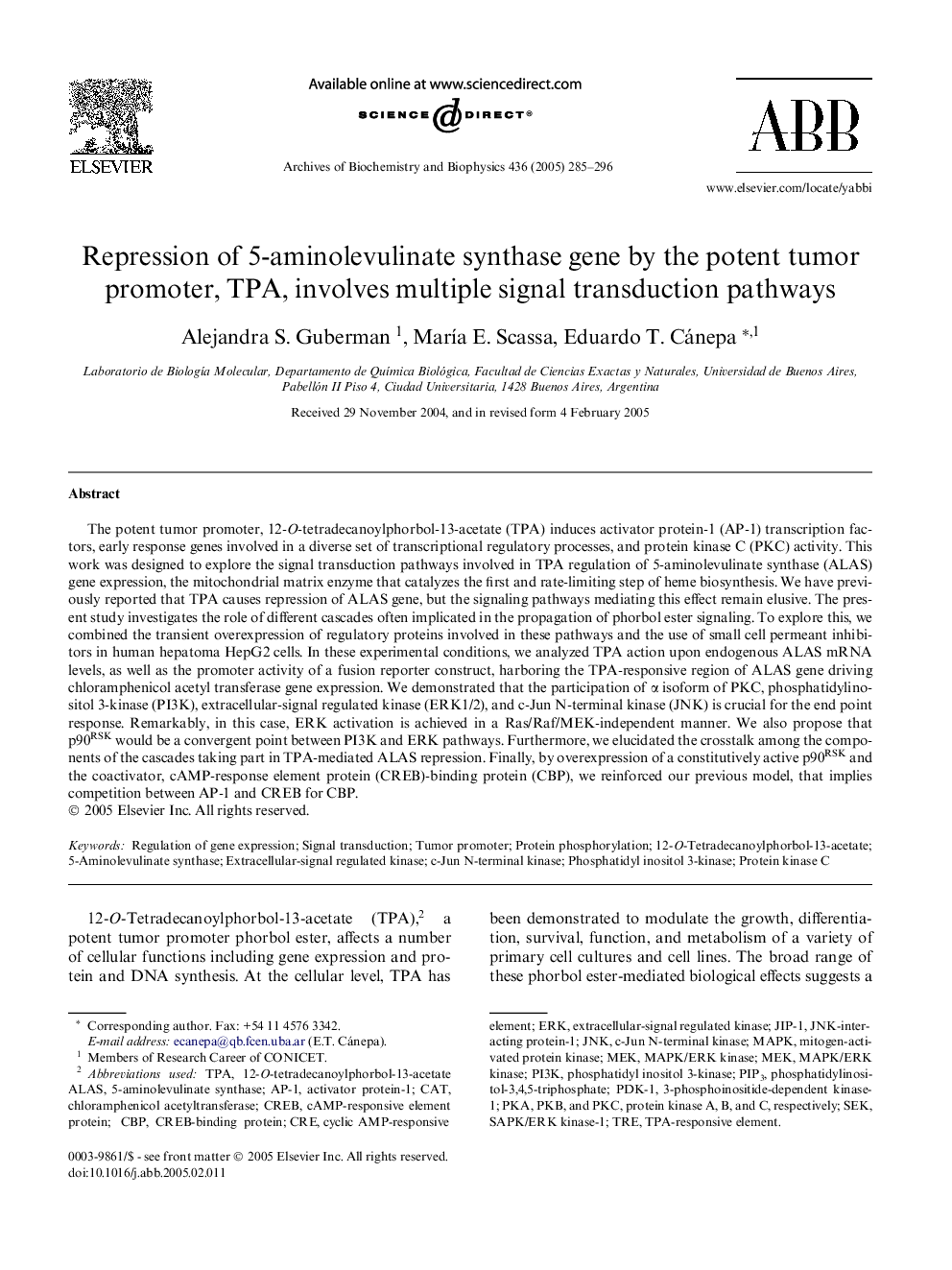| Article ID | Journal | Published Year | Pages | File Type |
|---|---|---|---|---|
| 9882246 | Archives of Biochemistry and Biophysics | 2005 | 12 Pages |
Abstract
The potent tumor promoter, 12-O-tetradecanoylphorbol-13-acetate (TPA) induces activator protein-1 (AP-1) transcription factors, early response genes involved in a diverse set of transcriptional regulatory processes, and protein kinase C (PKC) activity. This work was designed to explore the signal transduction pathways involved in TPA regulation of 5-aminolevulinate synthase (ALAS) gene expression, the mitochondrial matrix enzyme that catalyzes the first and rate-limiting step of heme biosynthesis. We have previously reported that TPA causes repression of ALAS gene, but the signaling pathways mediating this effect remain elusive. The present study investigates the role of different cascades often implicated in the propagation of phorbol ester signaling. To explore this, we combined the transient overexpression of regulatory proteins involved in these pathways and the use of small cell permeant inhibitors in human hepatoma HepG2 cells. In these experimental conditions, we analyzed TPA action upon endogenous ALAS mRNA levels, as well as the promoter activity of a fusion reporter construct, harboring the TPA-responsive region of ALAS gene driving chloramphenicol acetyl transferase gene expression. We demonstrated that the participation of α isoform of PKC, phosphatidylinositol 3-kinase (PI3K), extracellular-signal regulated kinase (ERK1/2), and c-Jun N-terminal kinase (JNK) is crucial for the end point response. Remarkably, in this case, ERK activation is achieved in a Ras/Raf/MEK-independent manner. We also propose that p90RSK would be a convergent point between PI3K and ERK pathways. Furthermore, we elucidated the crosstalk among the components of the cascades taking part in TPA-mediated ALAS repression. Finally, by overexpression of a constitutively active p90RSK and the coactivator, cAMP-response element protein (CREB)-binding protein (CBP), we reinforced our previous model, that implies competition between AP-1 and CREB for CBP.
Keywords
Related Topics
Life Sciences
Biochemistry, Genetics and Molecular Biology
Biochemistry
Authors
Alejandra S. Guberman, MarÃa E. Scassa, Eduardo T. Cánepa,
